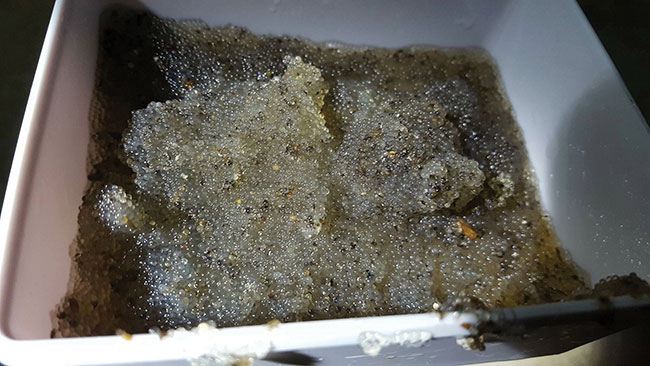
News & Views
Restocking
Sustainability
Philippines beefs up milkfish fry production with new five-year program
August 21, 2020 By Mari-Len De Guzman
 Milkfish eggs (Photo credit: Philippines Rock Fin Fish Farm)
Milkfish eggs (Photo credit: Philippines Rock Fin Fish Farm)
The Philippines’ first government-funded milkfish (Chanos chanos) hatchery just released 50,000 fry at the Lingayen Beach, located in the province of Pangasinan, north of the capital city of Manila, according to a news report from the Philippine Daily Inquirer.
This is the second batch of fry of milkfish, locally called bangus, produced from the hatchery that received funding from the Bureau of Fisheries and Aquatic Resources (BFAR), as part of the government’s five-year Bangus Fry Sufficiency Program (2020-2025).
“We hope the fry would survive in the wild and would replenish the depleting fish resources in the gulf,” hatchery owner Isagani Nicolas told the Inquirer. “This is the second batch of larvae (one-day-old bangus eggs) which we reared for 21 days,” Nicolas said. The first batch consisted of 400,000 larvae that were harvested on July 19.
The hatchery consists of 16 tanks, with four being used for larval rearing and the rest are for producing natural food for the fry. Nicolas told the Inquirer he also feeds the fish at least two trays of chicken egg yolk per day.
The Bangus Fry Sufficiency Program of the Department of Agriculture hopes to produce more milkfish to supply domestic demand by establishing various hatcheries across the country. In 2019, only 860.75 million fry were produced by registered bangus hatcheries in the country while 19.5 million of were caught in the wild, according to BFAR. This only accounts for 24 percent of the total annual fry requirement. To compensate, bangus fish farmers are forced to import fry to sustain annual production. The major source of fry imports is Indonesia.
There are currently five hatcheries in the country producing milkfish fry under the Bangus Fry Sufficiency Program. The Department of Agriculture plans to establish 299 community-based hatcheries across the country.
“In the next five years, DA-BFAR’s sees that the Bangus Fry Sufficiency Program can add an estimated 1.5 billion locally-sourced fry to the existing fry production, spurring the growth in the bangus industry,” BFAR said in a statement.
Print this page





